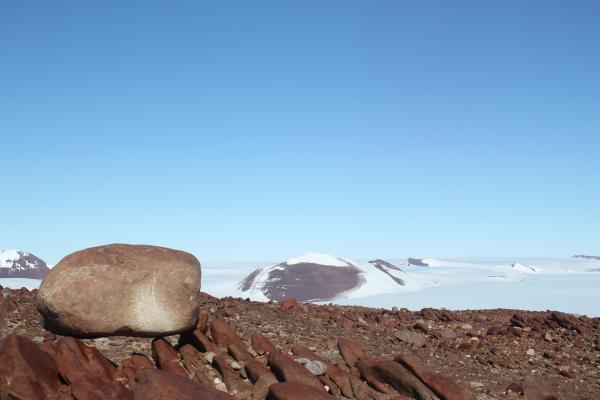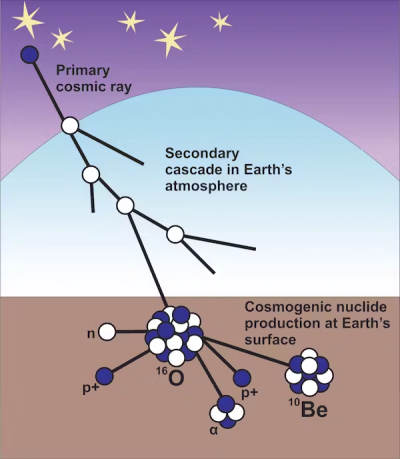Cosmic Rays Reveal Earth's Geological Secrets and Climate Future

ORIGINALLY POSTED BY BYRD POLAR AND CLIMATE RESEARCH CENTER
Advanced Dating Techniques Using Cosmic Rays Offer New Insights into Earth's Past and Present Environmental Challenges
In an article published earlier this month in The Conversation, a group of international scientists, including Byrd Center Research Scientist Jamey Stutz from the Polar Rock Repository, shared how researchers employ a sophisticated technique known as cosmogenic surface exposure dating to investigate Earth's climatic and geological history.
This method leverages cosmic rays to measure the exposure time of rocks on the surface, providing a "clock in the rocks" that reveals critical insights about the planet's surface changes and climatic shifts.

Cosmic rays, high-energy particles from outer space, bombard the Earth continuously. While most are deflected by the planet's magnetic field and atmosphere, a few penetrate the surface, interacting with elements like silicon and oxygen to form new, rare elements known as cosmogenic nuclides.
The presence and concentration of these nuclides in surface rocks and sediments directly indicate the duration of their exposure to the atmosphere.
This technique has proven invaluable in various geological studies. For example, this method investigated the mystery of the Green Lake landslide, one of the Earth's largest landslides, in southeast Fiordland, New Zealand. Contrary to previous beliefs that a retreating glacier triggered the landslide, cosmogenic dating suggests a massive earthquake was the likely cause, with rocks at the site dating back approximately 15,500 years, long after the last ice age concluded.
Similarly, the frequency of lava-producing eruptions at Mt Ruapehu, New Zealand's highest mountain, was also examined. The findings indicate that such eruptions occur in clusters and have shaped the volcanic landscape for millennia. This data is crucial for local disaster preparedness and infrastructure planning.
The technique has also shed light on the historical dynamics of glaciers, such as those in East Antarctica. Scientists can reconstruct past glacier heights and movements by analyzing rocks transported by glaciers. One significant finding is the thinning of Byrd Glacier by at least 200 meters around 7,000 years ago during a period of global climate stability.
The significance of these studies extends beyond their scientific value. They underscore the importance of interdisciplinary collaboration in understanding and preparing for environmental challenges. As researchers, policymakers, and various stakeholders work together, these findings provide a more accurate understanding of geological and climatic events.
This knowledge is crucial in forecasting and mitigating the impacts of natural disasters and climate change, including the potential rise in sea levels that threaten coastal communities worldwide.
As Earth faces increasing environmental challenges, cosmogenic nuclide research highlights the planet's dynamic history. It enhances our ability to predict and adapt to future changes, ensuring better preparedness for the coming decades.
Learn more by visiting The Conversation.
Image credit: Jamey Stutz
